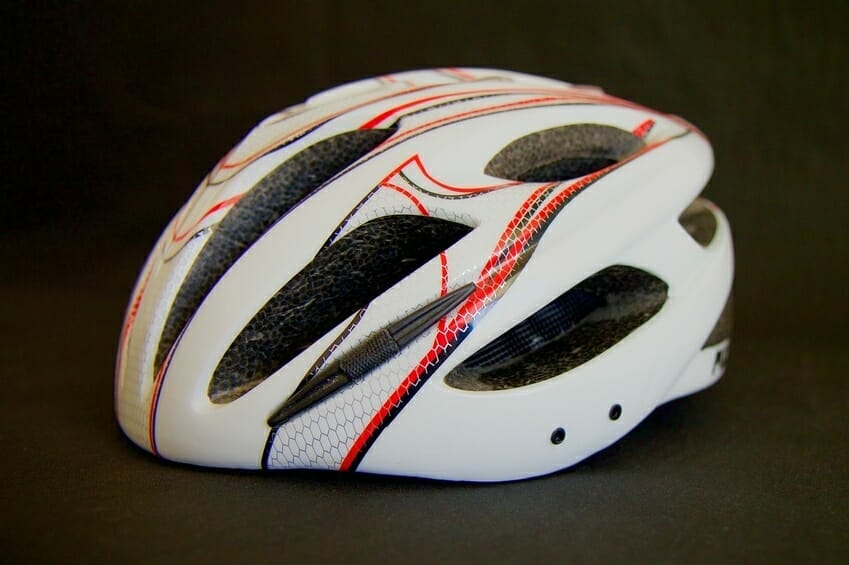 In 2016, a total of 835 U.S. bicyclists were killed in accidents involving a motor vehicle, and 51% of those riders were not wearing a helmet. Wearing a helmet is the most important thing bicyclists hitting Texas roads can do to protect themselves from a serious head injury or death.
In 2016, a total of 835 U.S. bicyclists were killed in accidents involving a motor vehicle, and 51% of those riders were not wearing a helmet. Wearing a helmet is the most important thing bicyclists hitting Texas roads can do to protect themselves from a serious head injury or death.
There are many factors to consider when choosing the proper helmet. Here are 5 tips to keep in mind:
1. Type of Helmet
While all helmet types are designed to protect your head from impact, it’s important for cyclists to keep in mind the type of riding they’ll be doing when choosing a helmet. There are three essential types of helmets – recreational, road, and mountain.
- Recreational helmets are made for every rider and can be considered an economical choice for all riding conditions.
- Road bike helmets are preferred by cycling enthusiasts for their lightweight feel, aerodynamic design, and generous ventilation, which can help reduce the risk of motorcycle accident injuries.
- Mountain bike helmets feature enhanced rear-coverage protection and a firm fit that’s ideal for tackling rocky roads and terrain. In some instances, mountain bike helmets also feature full facial protection—perfect for downhill and park riders.
2. Helmet Positioning
The most common mistake cyclists make when wearing a helmet is the placement on the head. In order for a helmet to adequately protect the head, it should sit comfortably and level around the head, not tilted towards the back of the neck.
3. Sizing
One of the most important factors to consider when selecting a helmet is size. A helmet should feel snug, but not tight. Sizing will vary from brand to brand, so it’s imperative to try on multiple options when shopping around. Don’t forget to adjust the rear fit dial, side buckles, and chin strap when fitting a helmet. Typically, a helmet should not move more than a half inch in any direction when worn correctly.
4. After-Purchase Care and Storage
Helmet maintenance is equally as important as finding the perfect fit to ensure maximum safety. When washing, it’s critical to not use any harsh cleaning solutions or chemicals, as this could damage the exterior. Avoid storing in areas with extreme heat, such as an attic or inside a car. The excessive heat may cause bubbles to form, reducing the effectiveness of the helmet.
5. Replacement
A helmet should be replaced every five years or immediately following an accident or significant impact.
Attorney Terry Bryant
 Terry Bryant is Board Certified in personal injury trial law, which means his extensive knowledge of the law has been recognized by the Texas Board of Legal Specialization, setting him apart from many other injury attorneys. The 22 years he spent as a Municipal Judge, Spring Valley Village, TX also provides him keen insight into the Texas court system. That experience also helps shape his perspective on personal injury cases and how they might resolve. This unique insight benefits his clients. [ Attorney Bio ]
Terry Bryant is Board Certified in personal injury trial law, which means his extensive knowledge of the law has been recognized by the Texas Board of Legal Specialization, setting him apart from many other injury attorneys. The 22 years he spent as a Municipal Judge, Spring Valley Village, TX also provides him keen insight into the Texas court system. That experience also helps shape his perspective on personal injury cases and how they might resolve. This unique insight benefits his clients. [ Attorney Bio ]


 In 2016, a total of 835 U.S. bicyclists were killed in accidents involving a motor vehicle, and 51% of those riders were not wearing a helmet. Wearing a helmet is the most important thing bicyclists hitting Texas roads can do to protect themselves from a
In 2016, a total of 835 U.S. bicyclists were killed in accidents involving a motor vehicle, and 51% of those riders were not wearing a helmet. Wearing a helmet is the most important thing bicyclists hitting Texas roads can do to protect themselves from a  Terry Bryant is Board Certified in personal injury trial law, which means his extensive knowledge of the law has been recognized by the Texas Board of Legal Specialization, setting him apart from many other injury attorneys. The 22 years he spent as a Municipal Judge, Spring Valley Village, TX also provides him keen insight into the Texas court system. That experience also helps shape his perspective on personal injury cases and how they might resolve. This unique insight benefits his clients. [
Terry Bryant is Board Certified in personal injury trial law, which means his extensive knowledge of the law has been recognized by the Texas Board of Legal Specialization, setting him apart from many other injury attorneys. The 22 years he spent as a Municipal Judge, Spring Valley Village, TX also provides him keen insight into the Texas court system. That experience also helps shape his perspective on personal injury cases and how they might resolve. This unique insight benefits his clients. [ 

